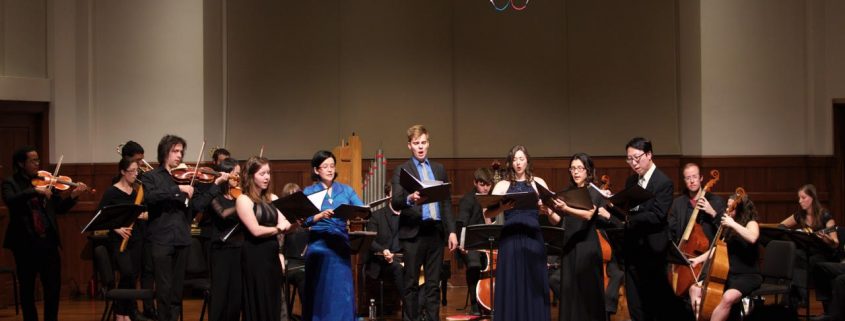Ensemble brings global sounds to stage
The USC Thornton Baroque Sinfonia will perform a series of early modern European pieces at the Newman Recital Hall on Friday night.
The Baroque Sinfonia is a period instrument ensemble that specializes in music from the 17th to mid-18th century. Adam Gilbert, an associate professor at USC Thornton School of Music, will be leading the Sinfonia.
The Sinfonia is made up of graduate and undergraduate students who are apart of USC’s early music program. These 25 members perform four times a year at USC and have played across the country, in addition to having been featured on NPR for their talents.
This event will include myriad different sounds and instruments, including a seven-member band made of baroque oboes, bassoons, and guitars, the violin and viola da gamba, recorders and renaissance trombones, with additional vocal components.
The Sinfonia is known for mixing different cultures and musical styles during their performances. One of the most popular performances hosted by the ensemble was an event through Visions and Voices. In this performance, Italian bagpipes, an instrument that has exerted much influence on baroque and classical music, was featured with the Sinfonia.
Friday’s performance will have two main elements. The first is improvisation, something that the ensemble has never done onstage before. These techniques are a recreation of the improvisations that began in the 1500s until the baroque period during the 17th and 18th centuries. Four major chord progressions will be repeated with players extemporizing with every chord change by building upon the previous one.
The program will open with André Campra’s Entree and Chaconne from Les Fetes Vénitiennes. Other pieces include Romanesca, which comprises of similar underlying harmonies to the popular Greensleeves; Juan de Araujo’s The Canario, a folk harmony poking fun at the country people of Northern Italy; and Portuguese villancico Sa qui turo, a common poetic and musical work in the late 15th century.
The performance will close with improvisations of Gabriel Garcia de Mendoza’s Moderno that features sounds from Moorish dances and A siolos molenas.
“The perform will be joyful,” Gilbert said. “It is very rousing, toe-tapping music. We are having a conversation with people who have made music hundreds of years ago.”
Gilbert specializes in 15th- century music and has directed the Early Music Program since 2006.
The second component of the performance is the European perceptions on African dialects, done through three
villancicos, a unique type of vocal typical of Spanish and Portuguese Christmas songs.
These villancicos are a European mimicry of the
Afro-Spanish and Afro-Portuguese dialects of the African slaves and are based on the songs of the shepherds who were the first to greet the Angel and announce the birth of Jesus.
These mixed African and Spanish chord progressions are akin to those heard in today’s pop music.
Though these pieces are so varied with different histories, they are all joyous pieces that will celebrate the diversity of the music of the period.
“When the audience leaves, we want them to feel less tired and more excited,” Gilbert said. “Music should make people feel like they are part of a community and rejuvenated. Even though the music we are doing is centuries old, every time we play, we are bringing the piece back again.”
The Baroque Sinfonia will showcase this unique blend of music of different cultures this Friday at 8 p.m. The performance will last for 70 minutes and is free for all.

